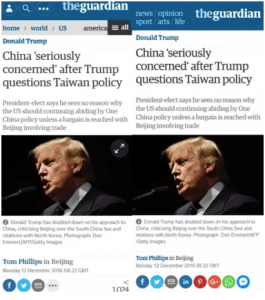By Bryan Evans, Published October 23, 2014

As brands across the globe scurry to put in place public relations plans for next year, it seems fitting in these last few months of 2014 to reflect on some of the most memorable concepts that caught our attention this year.
From the sound of your voice to the burger of your choice, here are the top five PR takeaways that should be considered when planning for 2015:
- Quit Howling at Reporters: The sound of your voice can make a reporter cringe. According to The Wall Street Journal article, Is This How You Really Talk?, the sound of a person’s voice strongly influences how he or she is visualized. In fact, this sound matters twice as much as the content of the message, according to a study of 120 executives’ speeches by Quantified Impressions, an Austin, Texas, communications analytics company. Things to avoid when speaking to reporters over the phone include uptalk – the act of pronouncing statements as if they were questions – and vocal fry, ending words in a raspy growl. Both of these will make the journalist think that you’re in pain – and that distracts from the message. Yet, marketers have been violating proper verbal communications tactics for years – not because they’re out to destroy the profession, but because they’re oblivious to the issue.
- Be more adventurous in your Storytelling: At a time when so many competing messages are being pushed out, it’s incumbent upon PR folks to communicate compelling stories to the media without fabricating the truth. In the end, it’s what any good reporter wants to achieve. Imagine if we all committed in our hearts to be storytellers rather than just story pitchers? The two can coexist. Great media outreach should inspire, inform and build conversations. In Peter Guber’s book, Tell to Win, he discusses how storytelling will always be about the ooh’s and aah’s, not the 0’s and 1’s. “Regardless of the delivery mechanism or the form, the DNA of successful narrative bonds information to emotion making it resonant, memorable and actionable,” noted Gruber. According to Gruber, stories have always been igniters of action, moving people to do things. But only recently has it become clear that purposeful stories – those created with a specific mission in mind – are absolutely essential in persuading others to support a vision, dream, cause, and eventual media placement.
- Avoid Double Sided Messages: Some Coca-Cola consumers were fizzing with anger earlier this year because of a conflicting PR campaign. On one side, the brand promotes its approach to fighting obesity worldwide, including listing calorie counts prominently on the front of their cans and bottles. On the other side, the company is hard at work promoting the very same sugary drinks that help prolong the growing childhood obesity epidemic. Double-sided marketing messages will always create tug-of-wars between brands and consumers. Yet more and more brands are attempting to become advocates against the very products they promote to consumers. Some brands categorize it as transparency, but often times that transparency only reveals poor thinking. There’s no changing the core product, but smothering consumers with a little truth, a little fiction, and good ole’ humor keeps many big brands afloat. If a small brand executed a similar marketing approach as Coca-Cola’s Happy Cycle, it would vanish and never be heard of again. And while big brands have hefty shock absorbers to recovery from multimillion-dollar potholes, many brands can’t afford that luxury. Instead, long-term dividends come to those who build and market the brand as a true reflection of the product or service.
- Think like a Reporter: A company’s vision of “newsworthy” is often tainted by brand obligations. And major news organizations are trying to let us know. Commentary from key reporters at The Wall Street Journal, The New York Times, CNN, USA Today, NPR, Washington Post and others reveals a huge disconnect between the actual stories published and the pitches that precede them. So, before you rush that email over to the editor of Forbes Magazine, you need to think like a reporter. Successful PR sources not only take the time to examine what a reporter has written about in the past, but also think intelligently about how new topics relate and can actually add value for the reader. Oftentimes, PR sources tend to push stories out without any regard to the reader’s potential interest. In fact, PR pros should be capable of writing the article themselves – just as a reporter would – with all the information required by the target audience.
- Align PR Efforts with Customer Commitment: After 40 years, Burger King decided to change its slogan “Have it Your Way.” But the brand’s new slogan, “Be Your Way” adopted earlier this year, is so remarkably close that it adds a slice of brilliance to this public relations campaign. Successful brands understand that their ideology must always mirror the company’s commitment to its customer. If done right, a shift in messaging should help drive stronger, more meaningful and more consistent connections with consumers. In the end – even if it’s only perceived – your customers will, in fact, have it their way.
Business Articles | Business 2 Community
(358)







